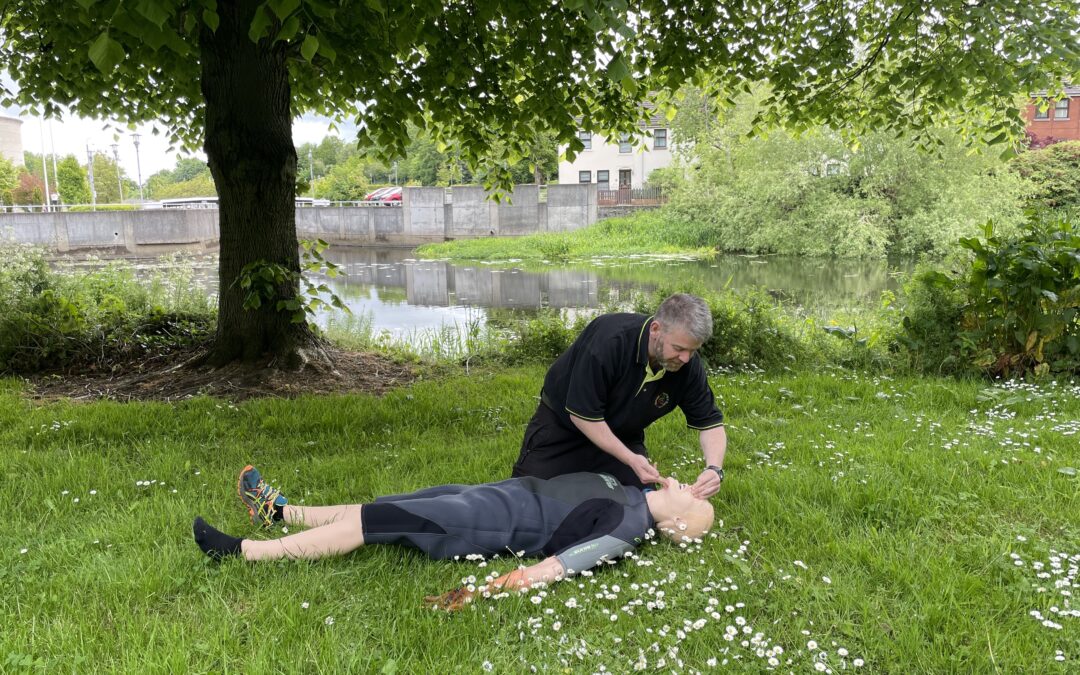The Human Body
Like a well oiled machine the human body runs quite efficiently, unconsciousness can strike at anytime however. There are multiple causes of this, so what happens? When the body comes into contact with what it can’t control, the reset button is pushed. The body temporarily shuts down and all the systems go off line. Soon the brain comes around & wants to know if enough oxygen is being delivered. Once established, internally & externally systems come back on line one by one & the body wakes up.
Causes Of Unconsciousness
In first aid there are 10 primary causes of unconsciousness, it can be very difficult to identify in most cases during first aid. Ultimately though peoples airway can become blocked or compromised. In order to ascertain someone’s conscious levels in first aid the primary survey is conducted. The starting point is to assess for any danger that may be present, this can include items such as power tools, ladders or even cables. After this process a response check is done, is the person alert? Do they respond to your voice or a physical shake? So if there is no response to these actions they are unresponsive. The next step is to open the airway, immediately inspect inside for any obstructions. establish if they are breathing. So in most cases the condition that has caused unconsciousness can be unknown, but they can include
- F – Fainting – Emotion driven things such as fear, pain, excitement & sadness
- I – Imbalance of temperature – Temperature goes to high the brain bobbles like a boiled egg, which can cause seizures.
- S – Shock – An interruption or lowered level of fluids in the body
- H – Head injuries – Pressure on the brain or interruption in electrical output
- S – Strokes – A blockage or bleed in the brain
- H – Heart Attacks – A blockage of 1 or more coronary arteries
- A – Asphyxia – A blockage either choking or suffocation
- P – Poisons – can be inhaled, ingested, injected or absorbed
- E – Epilepsy – a disruption of electrical signals with many different types and causes
- D – Diabetes – An imbalance of sugars in the blood
Dealing With Unconscious people
Conducting the primary survey, this approach allows us to collect important information quickly. So if the person is breathing normally they are placed into the recovery position. Normal breathing refers to 2-3 breaths per 10 seconds in an adult with no wheezing. A series of steps follows.
- Step 1 – raise the closest arm above their head.
- Step 2 – draw the furthest hand to their cheek bending the elbow.
- Step 3 – bend the same knee & using it as a lever, roll them towards you.
- Step 4 – ensure both legs ar on the ground along with the upper elbow.
Commonly the person’s tongue can obstruct their airway, this will prevent oxygen going to the brain. The damage becomes irreparable in minutes causing long term effects, because of this prevention is better than cure. A fast response will prevent critical damage & professional help should be sought to assist the person. Access to the ambulance service is through dialling 999/112/911. Once connected to the ambulance controller they will ask you if the person is breathing.
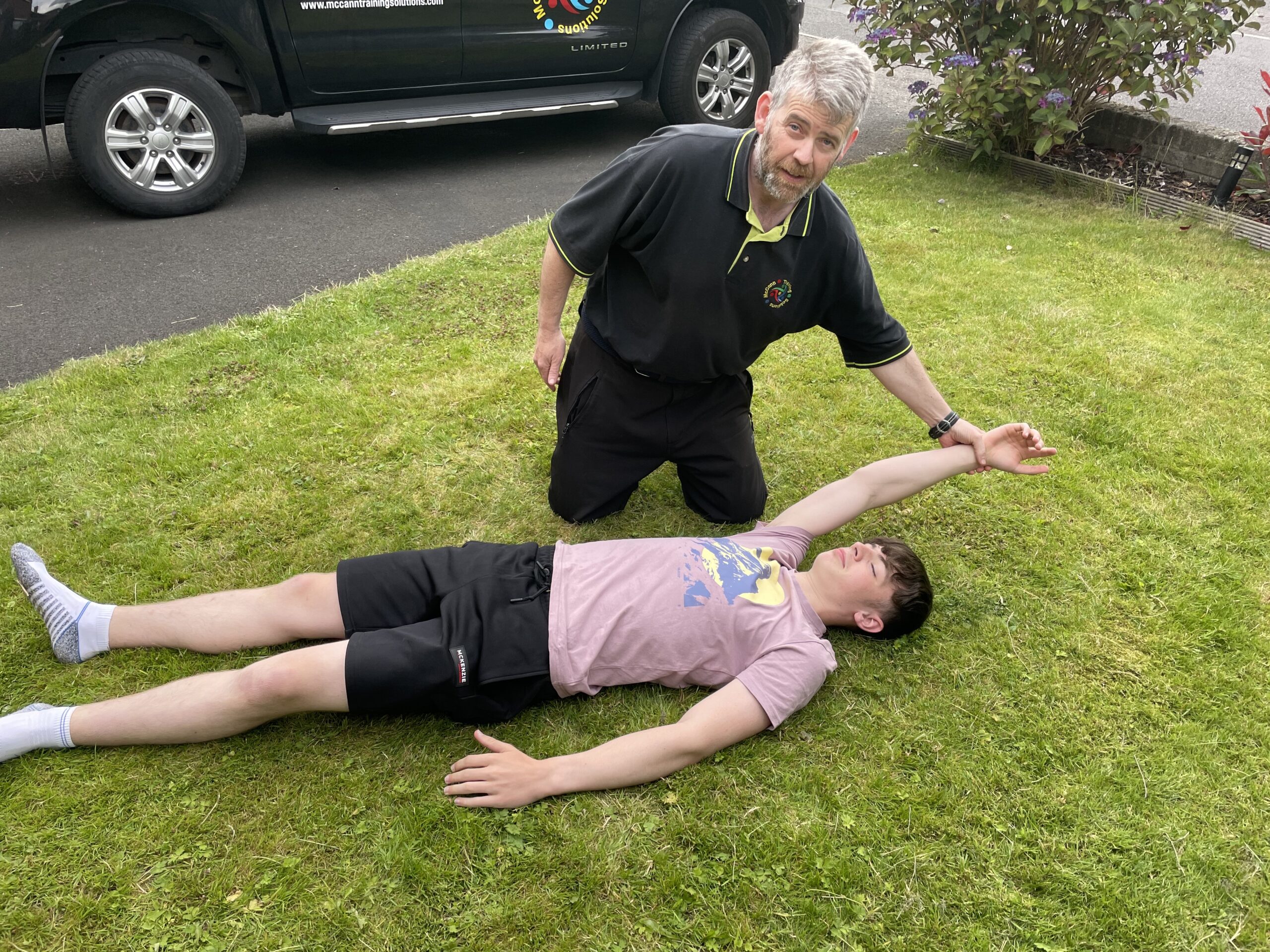
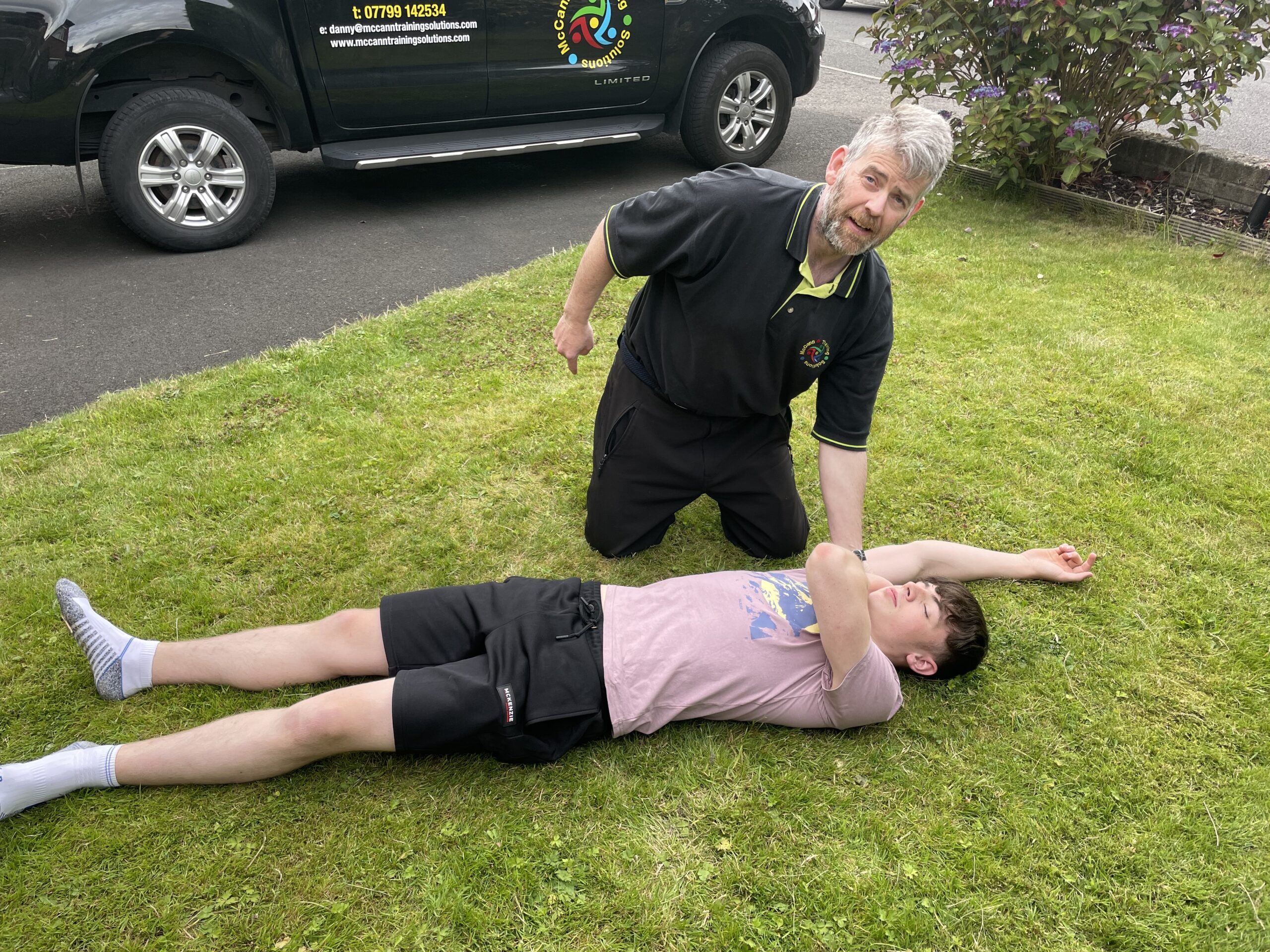
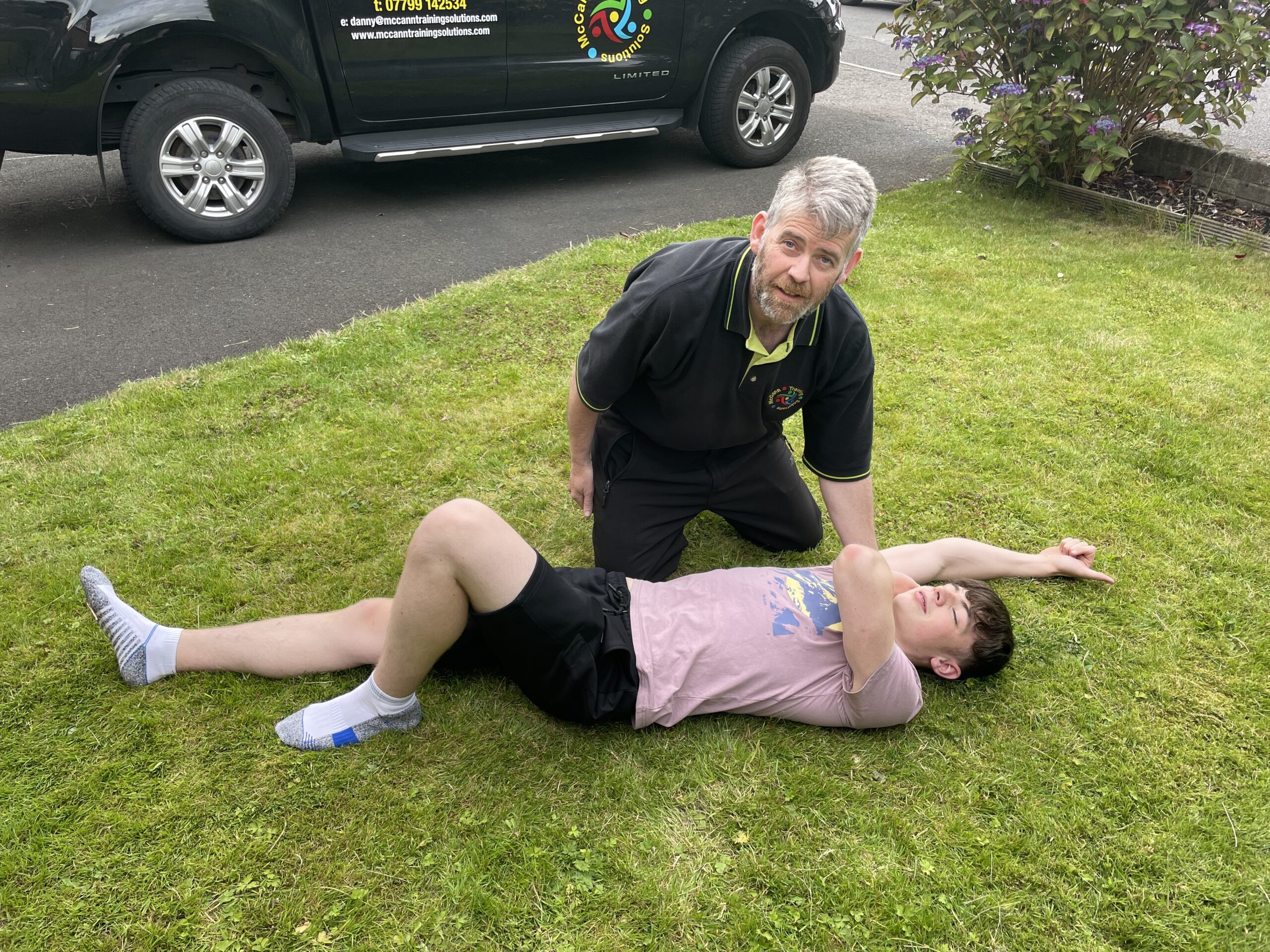
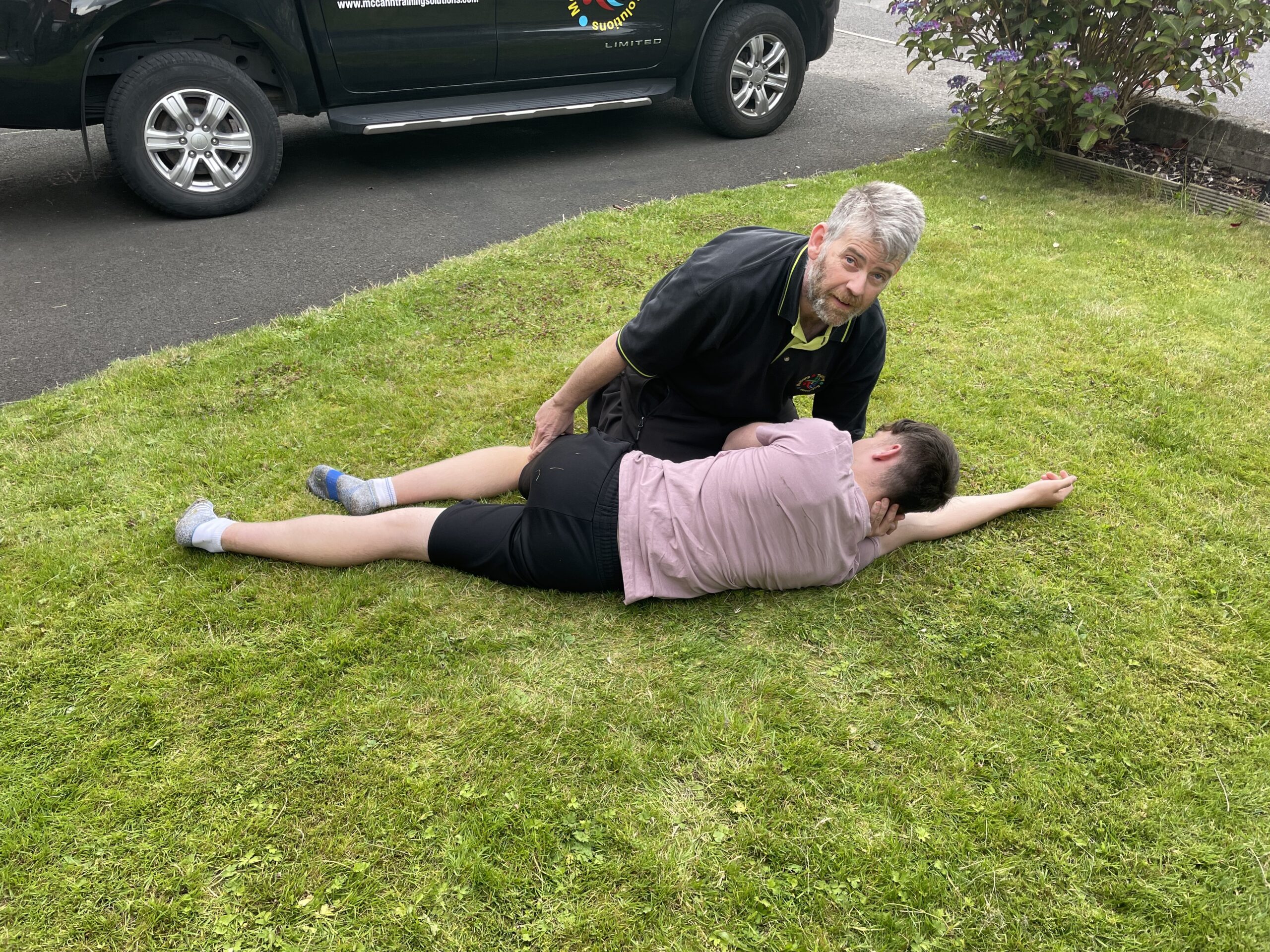
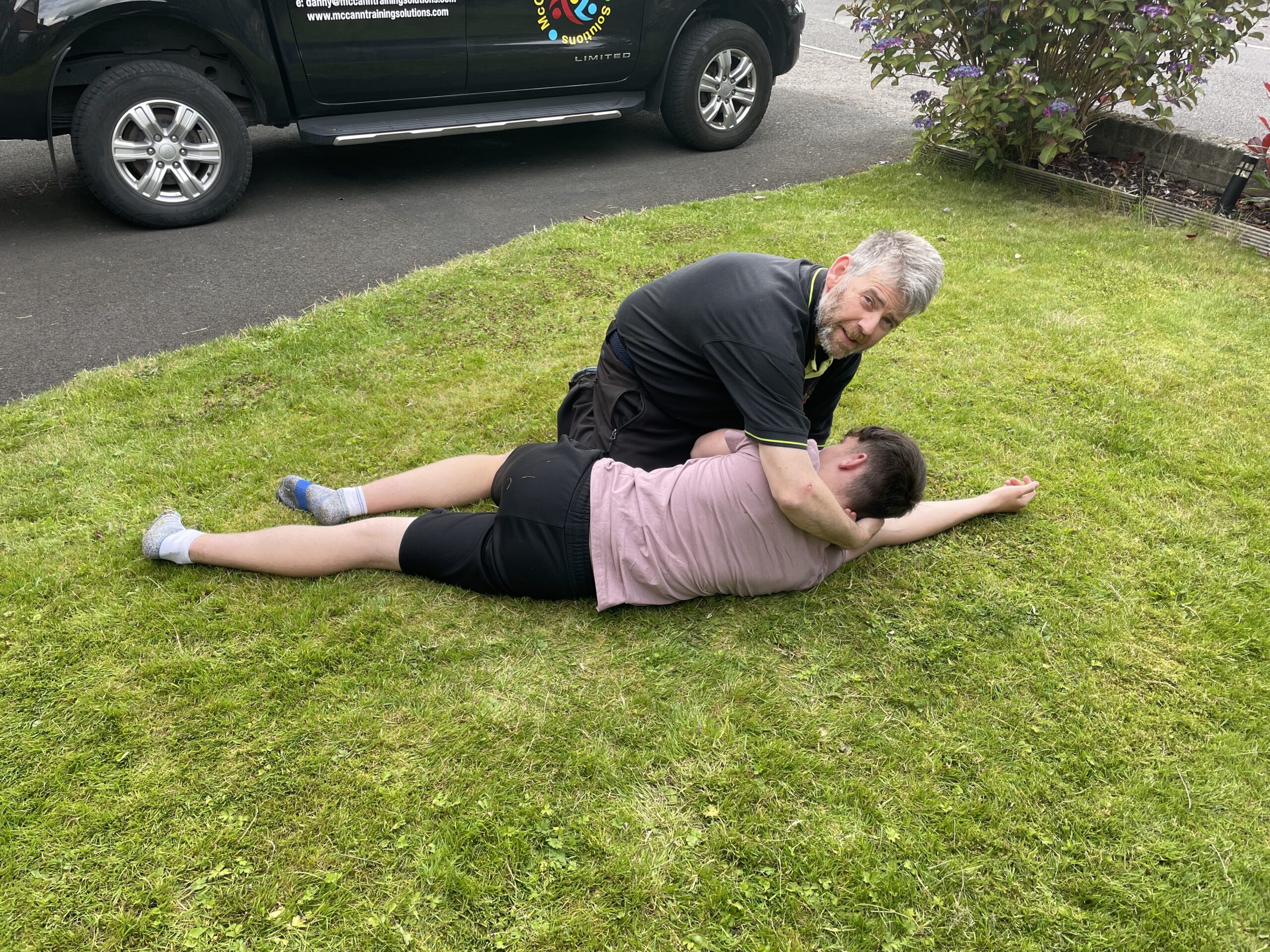
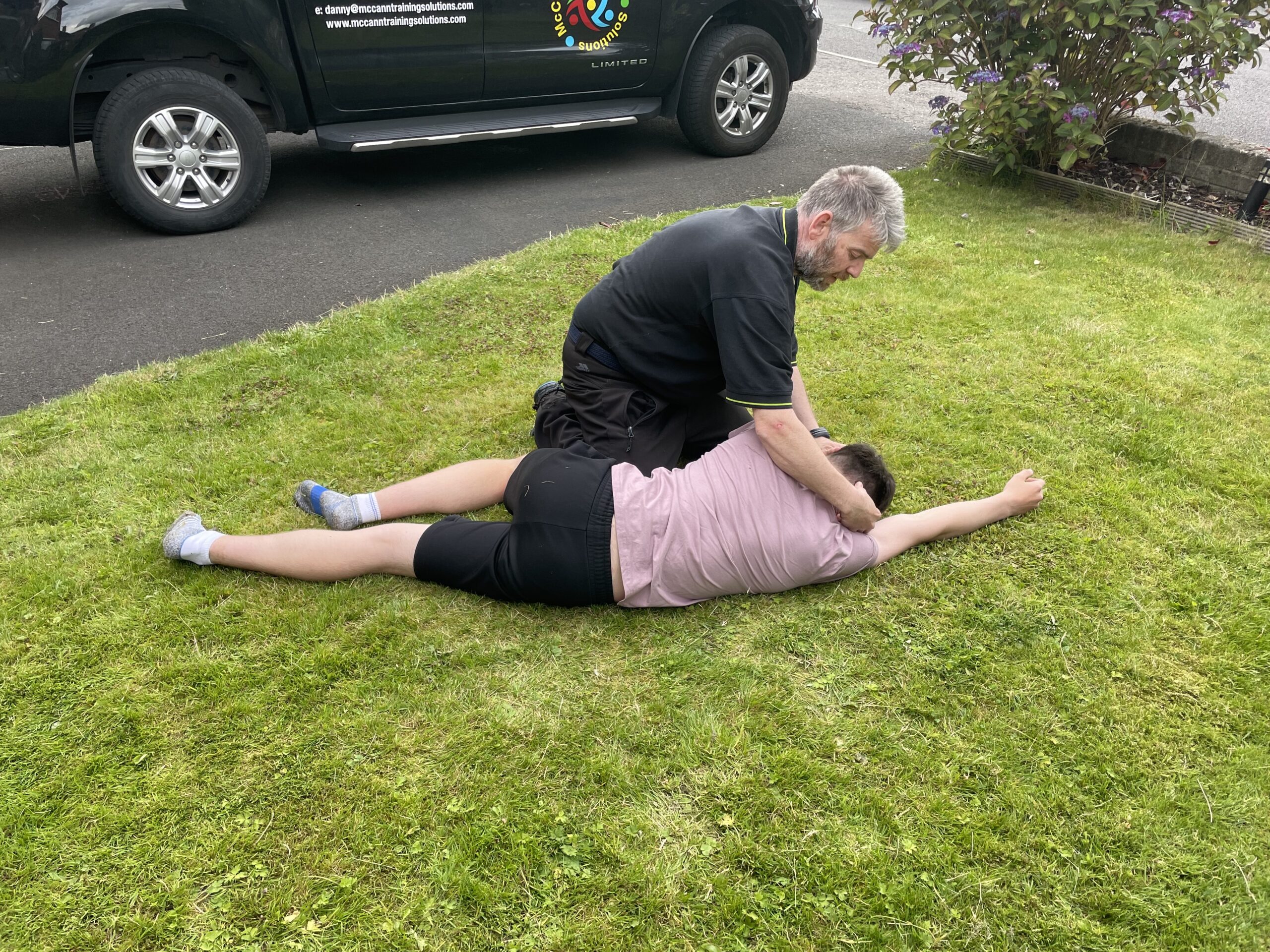
You can’t change what happens, you just change what you do about it
Danny McCann – McCann Training Solutions
